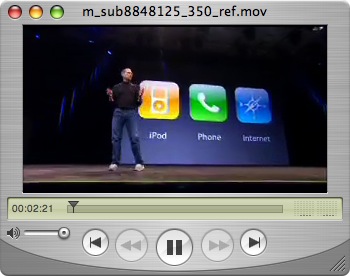In the Mouth of the Gift Horse: An Extended Rant in High Def
Ahhhh...the Cable Company
1. Do I really need that set-top box to receive the HD channels?
Apparently not. I got $100 off the purchase of my LG plasma television for signing up in the store with Insight Communications for the HD channels. Now, this is a deal that I could have cancelled the moment I stepped into the parking lot. The problem? Both Best Buy and Insight told me that I absolutely had to have the set-top box in order to receive the HD channels.
I bought the television on Monday, but Insight wasn't coming to my house for the installation until Thursday. In the meantime, I plugged in the same cable that had been in my older RCA set into the new LG plasma. I then set the LG to scan through the available channels. First it registered all the regular cable channels that I'd been used to. Then I noticed that it was scanning through something called "Digital Cable." What do you know--it found the HD channels!
When the cable guy arrived on Thursday morning, I showed him that I was already receiving the HD channels without a set-top box. He emphatically told me that I was mistaken--that I was viewing the channel stretch out to fill the screen. To demonstrate that I was not doing that, I switched to the regular NBC affiliate and then I switched to the HD version. The latter even had an "NBC HD" logo in the bottom right. After still protesting a bit, he finally conceded.
I'm not a fan of set-top boxes. I think they are an extra way for cable companies to get more money out of its customers. When we first moved into our house the Cable company said we had no choice but to take one. After keeping it two or three weeks and not being overly excited by it, I determined that the cable plugged straight into the television worked just as well, except that I now couldn't order Pay-Per-View or Movies On Demand. Who cares. I forced the issue, took back the box and got my bill reduced by $10 every month.
For right night I'm keeping the set-top box that was supposedly necessary for my HD channels, but only because it has a DVR in it. I may decide to give it back and find my own personal DVR that I wouldn't have to pay an extra $13 every month.
2. Why didn't the cable company give me a manual with the set-top box/DVR?
I suppose because they don't want me monkeying with it. But it's got firewire and USB ports, a smart media reader and no telling what else. This device is just asking to be connected to my computer. Fortunately, I found a copy of the manual on the Motorola website, but it looks like they've changed the firmware. Regardless, the monkeying will commence as soon as I have some free time. I'd love to be able to remove HD video recorded on it, edit it on my Mac and burn it to DVD. I'll let you know how that works.
Further, not only was there not a manual with the set-top box/DVR, there weren't any instructions for recording television shows. Now, I've since discovered that it's quite easy--all I have to do is find the show I want to record on the online schedule, highlight it, and hit the record button on the remote. But why don't they just tell you that? I wasted a good bit of time trying to figure it out and making it a good bit more complicated that was necessary.
3. Why are the advertised HD channels so misleading?
On the HDTV page (click the HD Channels tab) of Insight's website, they offer this lineup of HD channels:
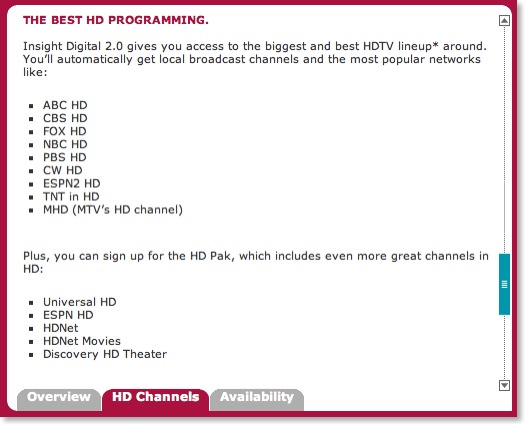
Now, the first set of bullets are what supposedly comes with the $13/month set-top box (which I've already determined that I don't necessarily need to get the HD basic lineup). The second set of bullets, called the HD Pak, comes with yet another $8/month fee. A lot of people opt for this HD Pak I've been told because it has ESPN HD with it. I'm not a big enough sports fan for this to matter to me; I'd probably be more interested in the movie and Discover HD channels.
However, I quickly noticed that I was not receiving the bottom three bullets in the first list: ESPN 2 HD, TNT in HD and MHD. Now, it's not that I necessarily wanted these channels, but it was the principle of thing thing since it was advertised and I was not getting them. But I had failed to note the little asterisk after the word "lineup" in the screen capture above. So I scrolled down and read this disclaimer:
* HDTV set, Basic Service, HD receiver (or Insight CableCard) required to receive all HD channels. Subscription to Classic service and at least 1 Digital Programming Pak (or Digital Standard/Choice) is also required to receive MHD, TNT in HD and ESPN2 HD. Not all programming available in all areas. © 2006 Insight Communications Company, Inc.
So I called the company up to ask about what I saw as misleading advertising. I mean doesn't it say, "You'll automatically get local broadcast channels and the most popular networks like..."? I suppose the key word here is like which can mean "similar, but not the same as." The woman I spoke to said that for me to get the three missing channels I would have to sign up for yet another package that would cost another $20/month. I asked her if she realized how misleading the Insight website is. She replied that she had not seen the website. I asked her if I could give her the URL, to which she replied that she had no desire to see it, I suppose implying a total apathy on her part that her company is misleading customers. I realize that often I should really just back down from a useless argument, but sometimes such deliberate obtuseness merely makes me push back more. So I asked to speak to her supervisor. After keeping me on hold for well over a half-hour, she came back on and said that if I would give her my phone number, one of her supervisors would call me back as they were all currently busy. That was two days ago and I've still heard nothing from them. I'm not sure if I can hold my breath much longer.
Are HD Channels Really That Great?
Yes and no. I've complained for years about the crummy picture offered by cable television. I've said over and over that if you live within range of a television station, a simple rabbit ear antenna on your television will give you a better quality picture than what cable can deliver. You just want get hundreds of other useless channels. Well, the six or so HD channels that I get are excellent quality, especially on my 42" screen. All of the other regular channels are still lousy, of course and now that I have comparison of the two on the same set, it just makes me a bit more resentful about the poor quality of standard cable television channels. I'm no television/cable technology expert, but I can't help wonder why it is that if they can deliver crisp HD pictures, they can't make all of them with quality images since they're all coming through the same cable.
If you've been having HD television envy realize a couple of things. First, most channels are not HD ready, and even if they are, not every television show is in HD. Even on the tradition three big networks, only two out of the three morning shows are in HD and none of the evening news shows are yet. And it seems that only the most popular of television shows are in HD, and sometimes I'm surprised to discover which ones are in regular 4:3.
Second, although the HD shows are very sharp and somehow it seems nicer to watch them in 16:9, you're not really missing out on a whole lot. All the action is still kept in the center of the screen for the benefit of the majority who still do not have HD sets. When are all channels supposed to move to HD--by 2009? I suppose that only after that deadline, directors will start to take advantage of the whole screen.
What's the Deal with HD DVD Movies?
Currently, I only own about three HD DVD movies. My regular DVD collection is fairly large, so I doubt that I will ever attempt to completely replace it with HD movies, unless that's just a multi-year goal. Regardless, from now on, I would prefer only to buy movies in HD. Also, I would consider replacing some of my favorite movies because HD DVD really is significantly more impressive than regular DVD. However, having said that, if I were to replace any movies, it would definitely be some of my favorites. What I've noticed though about a number of the HD movies (both HD DVD and Blu-ray) that have come out in the last few months is that they are movies only with no extras. Part of the reason I enjoy buying a DVD (as opposed to what will not doubt be an increasingly popular method of downloading them through legitimate sources) is the bevy of extra features such as deleted scenes, making of featurettes, etc. But take King Kong, for instance that came with my HD DVD add on drive. It contains only the movie with no extras at all. And if any movie ever called for extras, it would have to be King Kong. And although I know that HD movies take up more space on the disc than regular DVD movies, I'm assuming that there's lots of wasted space left on a disc that comes with only the movie.
As an aside, I said in my previous post about the HD format wars that I didn't have a clear format--that both HD DVD and Blu-ray technologies were superior to regular DVDs and I suggested that if anyone is torn, to merely flip a coin if HD movies are wanted now. However, to be honest, I suppose that now that I have an HD DVD player (which was bought not because I thought it was superior to the Blu-ray players, but simply because it was cheaper), I am rooting for that format to win. Universal's recent announcement of 100 planned exclusive releases for the year from both it's own back catalog and new movie releases concurrent in HD DVD and standard DVD is really a shot in the arm to this format.
Also, if you're holding out for the LG BH100 dual format player, keep in mind two things. (1) It's still cheaper to buy a regular HD DVD player and a regular Blu-ray player separately than to get the BH100. And (2) the BH100 won't access the HD DVD interactive features. It will essentially only play the movies. If you want a dual format player, I'd recommend waiting until the next round or until prices come down.
Why Is There Really No Such Thing as a Universal Remote?
I find it highly ironic that it takes me three remotes--all claiming to be universal remotes--in order to use all the features of my new HD setup. If I want to watch HD DVD movies, I have to use the Microsoft remote. If I want to use the DVR features, I have to use the remote from the cable company. If I want to access input modes or audio and video features of the plasma television, I have to use the LG remote. All three will change volume and turn my television on and off. But that's about as universal as it gets.
Okay, rant over. I originally thought this post would only take a couple of paragraphs. I'd be glad to entertain any conversation in the comments.
A Limited Edition Wide Margin TNIV?
In the meantime, as also mentioned in the previous post, a third-party seller created an Amazon.com entry for a mysterious wide margin TNIV that I had never heard of. Initially there were two separate sellers offering this Bible, one for $50 and one for about half that price. The lower-priced item has now been bought (by a This Lamp reader perhaps?), but the $50 wide margin TNIV remains. I contacted the seller and asked for a picture. He sent this:
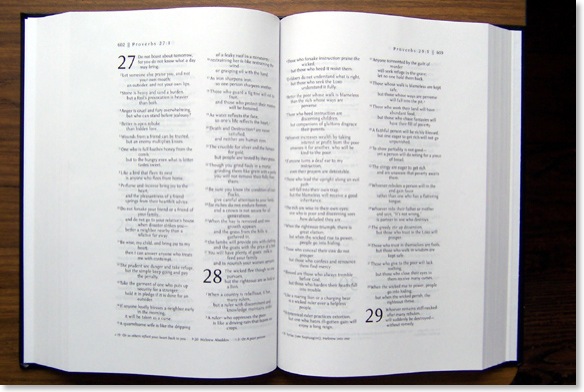
Intrigued, I replied back to the seller asking him to confirm that this was a TNIV and not an NIV Bible and I also asked if there was an ISBN for this item. His response:
Dear Buyer,
There is no ISBN for this particular item. It is however a TNIV. This item was published by Zondervan and the international bible society. It was copyrighted in 2005.
It is apparently a limited edition with this specific book being number 880. We found it in a marketplace in San Antonio and from what I can tell it is pretty rare. It is in like new condition and is a very strong book.
This is incredibly interesting to me that a wide margin TNIV was released for promotional purposes perhaps (?) but never to the general public. Regardless, the Bible pictured above would not meet my needs because there is no writing space next to the inner text which is a must if a wide margin Bible's text is in two columns.
But that brings me around full circle again. If something like the above Bible could be released in a limited run, why not a new printing of such a Bible from Zondervan or IBS. Often certain Bibles from Zondervan will have a "SEA" designation after them in their catalog. This means that it is a limited/seasonal printing that may or may not be printed again after the initial printing is sold out. I do know that there is a single-column TNIV reference Bible in the works (I've seen the proofs). If that particular Bible is not going to be a wide margin, why could there not be a limited run of them produced with wide margins to satisfy those of us who want them and also for the purposes of testing the market?
I know money is always the key issue in such things, but if the BIble pictured above could be produced in limited quantity, why not a single column wide margin TNIV?
Wide Margin TNIV Before the End of the Year? [Updated]

This is very interesting because I have had a number of email conversations with folks from Zondervan who have stated repeatedly that although a wide margin TNIV is not outside the realm of possibilities, there is not one currently planned. From the way the person at Zondervan worded things, it almost sounds as if the Bible is already a project in the works at IBS. Peter was told to contact IBS for further information on the wide margin TNIV, and upon doing just that was told that there was no such listing on the upcoming new TNIV publications through October. However, the person he corresponded with said he would check into it and let Peter know.
Since hearing from Peter, I have also contacted both Zondervan and IBS myself in order to get some kind of clarification. I am currently waiting for a response, but will post on the subject as soon as I hear something.
The case for a wide margin Bible: I have been repeatedly told by more than one publisher that wide margin Bibles simply do not sell as well as other Bibles. However, I find that these editions are indispensable for serious study, and I even like to take notes in a wide margin Bible so that I can use it when I teach or preach. In spite of lackluster sales, I would suggest to the Bible publishers--especially publishers of new translations such as the TNIV--that the users of these kinds of Bibles are influential on the purchasers of other Bibles. An investment into something like a wide margin TNIV might be very beneficial to IBS and Zondervan because teachers and preachers using them can ever more readily recommend them to students and other church members. I've been teaching out of the TNIV for the last few months, but the lack of a wide-margin edition makes me rethink my choice on regular occasion.
Related Reading:
"A Survey of Wide Margin Bibles"
"More Thoughts on Wide Margin Bibles: Here's What I Want"
Update 1/29/07: I believe that a wide margin TNIV will remain elusive as ever for the moment. I'm not so sure that that the information provided to Peter was anything more than miscommunication.
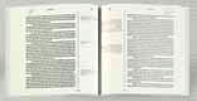
Meanwhile, the sharp eyes of one of our commenters on this post has spotted what is being claimed as a wide margin TNIV on Amazon.com. Two copies are available, both sold by third parties. The Bible is said to be a hardback edition published by IBS, and it carries an ASIN number of "B000MBNJLO" which is odd because I can find no reference to that number anywhere else on the internet. Further, the Bible is said to only be 1144 pages which suggests to me that the print would not be large enough. A decent wide margin Bible is going to have somewhere around 1500 pages. I have emailed both sellers asking about type size and asking for screenshots of a spread.
I'll let you know if I hear anything significant.
HD DVD vs. Blu-ray: In the End the Consumer Wins, But That Victory May Be Further Off Than We Imagine
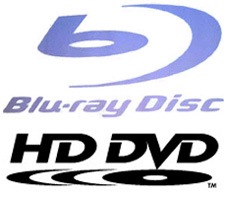
With the gift card I received recently (see previous post), I bought an HD DVD drive that plugs into my Xbox 360. The drive is not for games, but simply for watching HD DVD movies. I didn’t buy it because I thought that HD DVD was better than Blu-ray; I bought it simply because as a $200 add-on, it is the cheapest way to watch high-definition movies today.
But my apathy toward which format is best surely puts me in the minority among high-def movie aficionados. If you ask people who care about this, they usually have taken a side and have a very strong opinion. This is on the level of Mac vs. Windows, Chevy vs. Ford, Democrat vs. Republican or Sunni vs. Shi'a.
According to who you ask either format has the superior picture and either format is outselling the other. Truthfully, it’s a great picture either way, and I don’t know if the human eye can tell a difference. One thing that Blu-ray discs have going for them is that they hold more data (50 gb) than the HD DVD discs (30 gb). But the truth is that no movie really needs the amount of space that either holds, even in high-def. At best, the promise of these new technologies means that we shouldn’t see as many multiple disc sets as we used to. A whole television series ought to fit on one or two discs for instance. But if anyone thinks bigger is better, Toshiba announced at CES a few weeks ago that they had developed a triple-layer HD DVD disc capable of holding more than the Blu-ray. Of course whether or not this triple-layer disc can be read on current HD DVD players is anyone’s guess because Toshiba didn’t say.
As I said, in the end the consumer will win because the picture quality really is significantly better than standard DVD drives. To compare, I played the HD DVD version of King Kong that came with my HD DVD drive. Then, I placed the regular DVD version Superman Returns in the player. I've always been pleased with the qualities of regular DVD's. But now I had seen "the look and sound of perfect" (the HD DVD slogan). I immediately put my copy of Superman Returns on eBay since there is a high-def version of it. The difference is that dramatic.
Often HD DVD vs. Blu-ray is compared to the VHS vs. Betamax format war of the late seventies/early eighties. I've always heard that Betamax was better, but I have no way of testing this assertion myself, so I'll just take everyone's word on it. In the end, even if VHS wasn't as good as Betamax, the consumer still won because we were now no longer tied to the airtime schedule of programs we wanted to watch. The consumer will win again this time because our entertainment experience will be increased; but contrary to what you might hear, it's not going to happen over night. If you've been putting off buying a player because you want to see which format will come out on top, you might just want to flip a coin and get one now.
Here's what I've noticed in my short-lived experience (less than a week) as an HD DVD owner: it's hard to find the HD DVD discs (and Blu-ray, too). The largest selection I've seen so far is at Best Buy, but you pay full price. At discount stores, they're few and far between. Wal-Mart doesn't carry them yet--at least not locally. Target has a small selection of a minimally equal amount of HD DVD and Blu-ray discs. Clubs like Columbia House don't carry either format yet. And you can't seem to rent them either. I went by both Hollywood Video and Blockbuster and neither one of them carried high-def discs. The guy at Blockbuster said that the chain was waiting to see which format came out on top. I told him it may be a long wait.
I've read a number of reports that say the format war will be over by the end of 2007. I have my doubts--let me explain why. What we're talking about here is the adoption of not just a new technology, but a replacement technology for video entertainment. In the VHS vs. Betamax war, I suppose a lot of it had to do with supply, price and marketing. But either technology worked with the televisions everyone had at the time. If I remember correctly off the top of my head, the DVD player was introduced around 1997, but because of its expense, folks didn't start buying them until around 2000 when they rushed to buy DVD copies of The Matrix on the sets that had come down in price.

But it's more complicated than price alone, and I don't see too many folks talking about this. When someone bought a VHS (or Betamax) player or a DVD player, it worked on their existing television. But high-def players require high-def televisions. Owners of high-def TV's are still clearly in the minority. The only way for sales of HD DVD and Blu-ray discs to increase is for more people to buy high-def televisions. But for that to happen, the prices must come down--significantly down.
Therefore the success of the new high-def formats are dependent on more than quality alone. They are dependent upon the adoption of high-def televisions. This isn't going to be solved anytime soon. It make take years.
This is why I've said that if you're undecided, flip a coin and pick a format. Many are touting LG's new combo HD DVD/Blu-ray hybrid player (BH100) as the answer to the problem. Actually it doesn't solve the format wars at all. Further, I'm not impressed with the machine. Besides its ridiculously high price (around $1200), recent word is that it cannot display the HD DVD logo because it is not fully compatible. Evidently, although it plays HD DVD video, it cannot access any of the interactive content on the discs.
Am I worried that the HD DVD format will lose and my investment in discs will be lost? No, not really. I would expect that I'm fine for at least five years or more, especially since Bladerunner, The Lord of the Rings Trilogy and the Matrix Trilogy (some of my favorite movies) are all slated for release on HD DVD. With that in mind, I'm good. And considering that it's still possible to buy old technology such as VHS players and even LP turntables, I'm not worried that I'll get stuck with a technology.
However, I'm very glad that I never got into Laserdiscs...
My FREE* Plasma TV
For Josh to get his MacBook Pro, he kept extremely detailed records in Excel spreadsheets regarding when he signed up for offers, how long the trial period was, when they confirmed his cancellation, etc. In the end, if a person sends back everything and participates in the offers only to the barest of minimums, he or she should be out somewhere about $100, which is not a bad investment that returns a $2,000 value (the price of Josh's MacBook Pro). I won't go into all his details, but I will point you to two very significant posts of his (especially if you want to try this yourself):
"How I Got a Mac for Next to Nothing"
"The Free Mac, Part II"
"Counting the Macs"
So, anyway, I decided back in the middle of November to try this myself. I didn't want a new laptop though--I'm still delighted with my black MacBook. However, if there's any luxury item out there that I'd never pay for on my own, it would have to be a high-def television. So I ran a google search for "high-def television" and found an ad from the same company Josh with which Josh participated for a "Gift Card for a $2,000 Plasma TV" (I'd give you the link, but it's now expired). I had to complete 18 offers, which although seemed like a lot, turned out in the end to be pretty manageable. Although I didn't keep a spreadsheet like Josh's, I did record all the same kind of details in a MS Word file that he had done. Plus I made PDF files of all agreements and emails confirming cancellations as I returned items. It took me about three weeks to complete all 18 offers. Then I was given a link to download a PDF file which I had to fill out with where to send my gift card and also tax forms since the card is worth $2,000.
The whole time I was working on this, I referred to it as "my scheme to get a free plasma TV." Kathy simply referred to it as my "scam" because she was skeptical till the end that it would actually work, especially with so little investment. Nevertheless, last Saturday I opened the mail to find a $2,000 Visa Gift Card in my name. Yeah, I know...I couldn't believe it either!
I talked it over with Kathy. Although the offer was for a gift card for a plasma television, technically we could do anything we wanted with the money because it was a generic Visa gift card. Heck, we could even withdraw the money from an ATM. Obviously, I knew there were lots of things we could do with $2,000 but Kathy (wonderful wife she is) said that I had wanted a television to begin with, I had worked hard to stay on top of the offers, and that I should stick to my original plan. So I set off Monday to get the television.
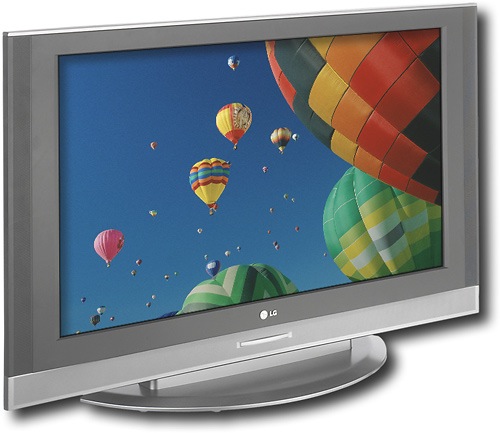
I'm absolutely delighted with the way everything has turned out. The television is great for high-def movies, games on the Xbox 360 and the handful of HD channels our cable service offers. I don't have surround sound, but the television has an audio mode that emulates it, and at the just right volume, our living room feels like a movie theater. This is the first television that I could honestly use to double as a CD music player as well.
In the end, I don't think I could have ever justified paying for something like this with hard earned money, even if I saved for it over time. But when someone says, "Here's $2,000--go get a plasma TV... Well, I just can't turn that down.
This really does work if you stay on top of it. See the links to Josh's posts above if you want to pursue it.
NASB vs. NRSV Round 1: Torah
Now, I should point out a couple of things. Although we do discuss accuracy of translation, that is not what we are trying to determine. We are strictly attempting to determine which translation was more literal in its rendering of the original text. Having used both translations quite a bit in the past, I am still confident that the NASB is much more literal than the NRSV, but we'll let the chips fall where they may. Further, I've written before that literal is not always to be equated with accuracy. I've already stopped using the NASB in public because of its literalness. I would think that if the NRSV was more literal, that would not really be a good thing.
Our evaluations follow below. Larry began tackling this much sooner than I had opportunity, so although I made my evaluations without his findings in front of me, my responses are in reaction to what he had already posted. You can read our dialogue in the comments of the post NASB vs. NRSV to see the original context for what is below including Larry's rebuttal to my evaluation of Deut 1:34.
| Reference | Larry's Evaluation | Rick's Evaluation |
|---|---|---|
Gen 2:8 |
The NASB95 and NRSV are quite close, but have these differences: The NRSV correctly includes the initial vav ["and"] and the NASB does not. The NRSV keeps together the phrase gan b'ayden ["garden in eden"] and adds afterwards adds miqedem ["in the east"] so in this verse, the NRSV is more literal |
Larry, you are right that these verses are very close. The NRSV does retain the initial vav which is very interesting considering most of these were removed in the 1995 revision for sake of readability (along with unnecessary kai/and in Mark’s Gospel, demonstrating that he might’ve been writing in Greek, but he was thinking in Hebrew/Aramaic). I’d be interested to know how many of these are retained in the NRSV vs. the NASB.
You’re also right that the word order is closer in the NRSV than the NASB, which I had to admit was surprising when I saw your initial analysis. I concur that the NRSV is more literal in Genesis 2:8. |
Ex 18:6 |
The Hebrew begins vayomer ["and when one told"]. In this case, the NASB95's footnote slightly more correct (although not as literal as it could be.) Also the final imah ["with her"] is only in the NASB95. So in this case, the NASB95 is more literal. | Again, in agreement here. It’s the NASB’s translation of the final phrase ‘immah/with her that pushes it to being slightly more literal. Although the NRSV’s elimination of this unnecessary phrase (in English) certainly makes it more readable. |
Ex 30:26 |
In this case, only one word distinguishes the NASB95 and NRSV. The word, ha-edut, is given three english definitions by the NRSV (which also gives the original Hebrew word). One of the NRSV's translation words is the one used by the NASB95. In this case, I regard the NASB95 and NRSV as exactly equally literal. | Agreed that both are equally literal. The NRSV’s note is more helpful though. I think we’d both agree that the NRSV has better notes that most current English translations. |
Ex 38:25 |
Once again, the NRSV and the NASB95 are very close. NRSV has "of", NASB has "from" -- both are valid interpretations of the Hebrew. NRSV has "measured by" and NASB95 has "according to" -- in both cases for the b' in b'sheqel haqodesh. I think that both are equally valid. However, "mustering" is indeed the more literal translation, and since we are counting footnotes, in this case, I must say that the NASB95 is slightly more literal. | Again agreed that the NASB is more literal here, but only slightly so. On an interesting stylistic note, I find it odd that the numbers are spelled out in the NRSV. When I teach my writing classes at IWU, the general rule I teach is to spell out numbers ten or less and use numerals for anything greater because this is easier to read. I generally find the NRSV to be an easier read than the NASB, and I’m surprised to notice for the first time how large numbers are presented. |
Lev 1:7 |
The only difference his "priest Aaron" vs. "Aaron the priest". Here, Aaron the priest better tracks "Aharon ha-kohen" so the NASB95 is more literal. | Agreed that the NASB is more literal, but barely and insignificantly so. |
Num 8:24 |
Here, both verses are more literal in parts. For the NASB95, "he" correctly captures the singular in "yabo" and also "and upward" is found in the Hebrew. But the word order "do duty in the service" is more correct than "perform service in the work" [ "tsava bavodat"] So, I am calling this a tie. | For the first time, I am going to disagree with your evaluation. Although I do agree with the two different literal phrasings in each translation, I would suggest that “enter” for the Hebrew bo’ is more literal than the NRSV’s “begin.” Therefore, I would suggest that cumulative with the other issues you point out, the NASB is more literal. |
Num 10:9 |
The NRSV and NASB95 are almost identical in this case, but both are in error, because the initial v'chi tavo'u milchmah is ambiguous and unclear (I would have translated it when you are at war.) So this is a tie, with both versions falling short. | I’ll hesitantly side with you that we have a tie here. I wonder though, aside from literalness if “attacks” in the NASB is not a better rendering than “oppresses” for tzrr. If I’m reading the HALOT correctly, warfare is in mind in this word, not the less specific idea of oppression. I want to side with the NASB for being more literal here, but I’m not 100% decided, so therefore I’ll go with a tie. |
Num 25:15 |
The NASB95 translates "umot beit av" literally here, so the NASB95 is more literal. | The NASB is by far more literal here, including it’s use of footnotes. So we are in agreement here. |
Deut 1:34 |
Both the NRSV and NASB95 fail to accurately capture "et qol divreichem." NASB95 attempts to caputre this with "the sound of your words" but sound is not quite right here. NRSV simply translates "your words" but fails to capture the intensifier with the meaning "your loud words" or "your purposeful words." The NASB95 translates v'yishava as "and took an oath" while the NRSV's "and he swore" -- here, clearly, the NRSV finds a single word solution and accurately captures the meaning. However, the NRSV fails to translate the final le'omor. So in this case, we have another tie -- neither version is particularly literal. | Larry, I don’t see how you can say we have a tie here. Et qol divreichem is literally “the sound/voice of your words” so the NASB’s rendering is quite literal—and more so than the NRSV--even if it doesn’t carry the meaning completely across. But that shouldn’t matter because we’re talking about literalness in this comparison, not accuracy of meaning. If we’re going to do that, we stepping into dynamic equivalency, which I have no problem with, but that wasn’t the purpose of this comparison.
Further, the NASB renders le’mor as “saying,” which although redundant in English is literal to the Hebrew text. The NASB is undoubtedly more literal in this verse to me. So we disagree here. |
Deut 13:6 |
The NASB95 re-arranges the verse, putting entices in the middle; the NRSV also slightly re-arranges the verse putting secretly near the front. But the NASB95, by moving the first word, does the most violence to the verse. Also, the NRSV here gives more literal textual variants. So I would say this is close, but the NRSV is slightly more literal. Note that Fox's translation is far more literal here (actually, this entire analysis has clearly indicated to me that both the NASB95 and NRSV fall short in contrast with Fox, which closely tracks the Hebrew):
|
I’m going to call this a tie. Although I would decidedly say that the translation from Fox is more literal, I don’t see any harm in the NASB’s moving the first verb which is commonly done in translations because word order in Hebrew doesn’t always make sense in English. The textual variant provided by the NRSV doesn’t have anything to do with the way the text has been rendered. As I said, I’m calling this one a tie, so we disagree here. |
Cumulative Score: |
2 (NRSV) - 4 (NASB95) - 4 (tie) |
1 (NRSV) - 6 (NASB95) - 3 (tie) |
So...round one goes to NASB.
Remarkably and Wonderfully Made
“For it was You who created my inward parts;
You knit me together in my mother’s womb.”
(Psalm 139:13 HCSB)
Our passage of study in Sunday School tomorrow is Psalm 139. As I was reading through the leader's guide to the curriculum tonight, a couple of paragraphs related to v. 13 stood out:
The second line in this verse is an example of a common characteristic of Hebrew poetry. The second line repeats the first line, but it does so by the use of synonyms. Hence knit me together is a synonym for created in the previous line. In light of the complexity of the human body the verb knit me together generates a mental picture that fits the context as well. Inside the womb, God wove tissue, bone, and sinew to form a living being.
The average adult body consists of approximately 650 muscles, 50,000 miles of blood vessels, and 206 bones. About 20 square feet of skin tissue covers these components in males and about 17 square feet is required in females. A baby at birth is even more complex than an adult. The infant has 300 bones. During childhood 94 of these fuse together.
Contemplating such complexities of the human body and God's awesome creative ability makes one truly exclaim with the psalmist the next verse:
“I will praise You,
because I have been remarkably and wonderfully made.
Your works are wonderful,
and I know |this| very well.”
(Psalm 139:14 HCSB)
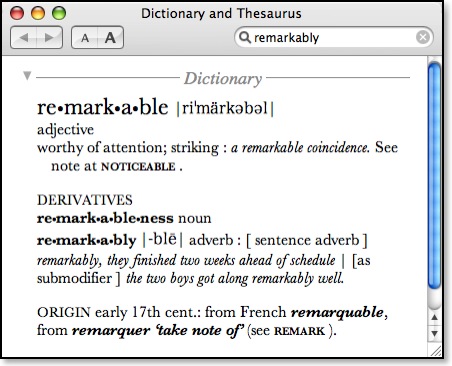
Evangelical, Scientific Leaders Launch Effort to Protect Creation
FOR IMMEDIATE RELEASE
January 17, 2007
CONTACTS: Heather Gonzales
202-789-1011
Evangelical, Scientific Leaders Launch Effort to Protect Creation
WASHINGTON, DC - In a first-of-its-kind collaboration, evangelical and scientific leaders announced today a joint effort to protect the environment. Speaking at a news conference in Washington, DC, a dozen leaders of the coalition shared concerns about human-caused threats to Creation - including climate change, habitat destruction, pollution, species extinction, the spread of human infectious diseases, and other dangers to the well-being of societies.
The coalition released an “Urgent Call to Action” statement signed by 28 evangelical and scientific leaders. The statement - sent to President George W. Bush, House Speaker Nancy Pelosi, bipartisan congressional leaders, and national evangelical and scientific organizations - urges “fundamental change in values, lifestyles, and public policies required to address these worsening problems before it is too late. Business as usual cannot continue yet one more day.” The group pledged to “work together toward a responsible care for Creation and call with one voice” to the religious, scientific, business, political and educational arenas to join them in this historic initiative.
“There is no such thing as a Republican or Democrat, a liberal or conservative, a religious or secular environment. We all breathe the same air and drink the same water. Scientists and evangelicals share a deep moral commitment to preserve this precious gift we have all been given,” said Dr. Eric Chivian, Nobel laureate and Director of the Center for Health and the Global Environment at Harvard Medical School.
“Great scientists are people of imagination. So are people of great faith. We dare to imagine a world in which science and religion work together to reverse the degradation of Creation. We will not allow it to be progressively destroyed by human folly,” added Rev. Richard Cizik, Vice President for Governmental Affairs of the National Association of Evangelicals.
Stressing that their effort is just beginning, coalition members spoke about some of the immediate next steps they will be taking, including holding meetings with Congressional leaders from both parties to inform them of this unprecedented effort and encourage their attention to environmental issues. They also plan to hold a Summit on the Creation and will develop outreach tools, such as a Creation Care Bible study guide and environmental curricula.
“If current deterioration of the environment by human activity continues unabated, best estimates are that half of Earth's surviving species of plants and animals will be extinguished or critically endangered by the end of the century. The price for future generations will be paid in economic opportunity, environmental security, and spiritual fulfillment. The saving of the living environment is therefore an issue appropriately addressed jointly by science and religion,” said Pulitzer Prize-winning author Dr. Edward O. Wilson.
One of the imperatives of the group will be to advance the dialogue and influence policy in regards to global warming. “In order to avoid clear and substantial dangers...it will be necessary to substantially reduce CO2 emissions during the next few decades, and perhaps by 80 percent or more before the end of the century,” said Dr. James Hansen, the leading U.S. climate change scientist.
The coalition vowed to expand their collaboration and encourage action from all sectors of society. “We are glad to be partnering with our friends in the scientific community. They have the facts we need to present to our congregations; we have the numbers of activists that will work through churches, government, and the business community to make a significant impact,” said Dr. Joel Hunter, Senior Pastor of Northland Church in Orlando, Florida.
The unique collaboration, 28-members strong and growing, was spearheaded by leaders from the Center for Health and the Global Environment at Harvard Medical School and the National Association of Evangelicals. During a retreat held last November 30 to December 2nd in Thomasville, Georgia, the group agreed that science proves that the natural world is imperiled by human behaviors and policies, particularly by the unsustainable burning of fossil fuels and degradation of living systems. They decided to embark on a continuing collaboration and authored the “Urgent Call to Action” statement.
*Institutional affiliation is given for identification purposes only. All signatories do so as individuals expressing their personal opinions and not as representatives of their organizations.*
I've contacted the NAE in an attempt to get a copy of the actual an "Urgent Call to Action" document as well as a list of the signatories. When I get these, I will post them here on the blog.
Waxing Nostalgic for Old Apple Hardware: The Irony of the iPhone
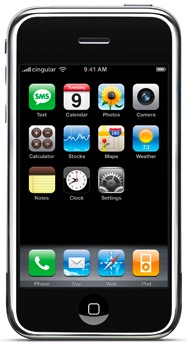
But it's ironic not just because Jobs would introduce yet another peripheral, but instead the irony lies in the kind of peripheral introduced. The new iPhone incorporates not just an iPod (really just an iPod nano) and a phone, but also a device that will contain calendar, contacts, and email much like the Apple Newton canned a decade ago by Jobs (although Newton holdouts are claiming that spec for spec the Newton does more). The iPhone also incorporates a 2 megapixel camera, even though one of the products killed by Jobs when he did away with the Newton was Apple's Quicktake Camera.
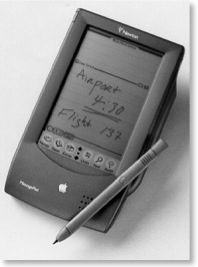
I have to admit that it's tempting to purchase a refurbished Newton from J & K, but it's hard to justify the $150 price on something that might end up becoming simply a collectable novelty than something of practical use. I carry my laptop with me everywhere as it is and sometimes wonder if I even need the PDA functions of my Treo.
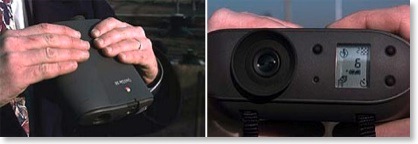
Or maybe I haven't found them yet. Are there any secret Quicktake photographers still out there?
NASB vs. NRSV
We use the most current versions of the NRSV and NASB (in particular, the 1995 edition of the latter). Our comparison is the standard Masoretic text and the NA27. For the purposes of this comparison, we do not consider the apparatuses of the original text. We strive to use the simplest "plain meaning" of the source text, for example, translating idioms literally rather than by meaning. We do not consider poetic issues such as prosody, rhythm, alliteration, multiple meanings but only plain meaning. If there is some point which calls for theological interpretation, we use the simplest and most straightforward interpretation.
We use a random number generator to pick 10 verses each at random from each of the following sections of the Bible, for a total of 50 verses:
Torah
Nevi'im
Kethuvim
Gospels+Acts
Epistles+Revelation
We count footnotes in the translation if they include some indication of "literal meaning" or "Hebrew original" etc. We evaluate the resulting 50 verses to see if the NASB or NRSV are equivalent in their degree of literal, if one translation is more literal than the other, or if they are incomparable for some reason (for example, they are both literal but in different parts of the verse). If we agree, we count it as a point, if we disagree, we briefly explain why. If either of us feels the random selection of verses was not representative, we draw additional verses from the section(s) in question. At the end, we see if we have a general consensus or not.
I'm sure the results will be very interesting, although I've already stopped using the NASB publicly because of its literalness. If the NRSV were to prove even more literal, I don't think that would be a positive aspect for it. But I stand behind my initial statement. I've used the NASB since 1980 and the NRSV was the primary translation I used in my M.Div papers from 1991 to 1994. The NASB is definitely more literal as a whole.
New to the Collection: Darby Bible

I've wanted a Darby Bible for a while because I knew it was a significant gap in the 19th century segment of my collection. Although I'm grateful to have a copy finally (and an inexpensive one at that), it's small size will prohibit any prolonged use of it by me. Fortunately, the text is available online in a number of places.
So are there any fans of the Darby Bible out there? If so, why do you like it?
Haloscan Problems
I checked the Haloscan forums and others are having the problem, too, so hopefully it will be corrected soon.
While on the Haloscan site, I discovered that there's a new comment widget showing the most recent comments. I have included it in the sidebar on the left and will keep it there even after the problem is fixed.
I will also add an update to this post as soon as we determine the problem is fixed.
UPDATE 3:30 PM: Comments are no longer generating error messages and I am receiving email notification of new comments. Everything seems to be working.
TNIV More Literal Than the NASB?
I thought about this last week as I was preparing for our Nehemiah Bible study on Sunday. Consider Neh 9:16--
“But they, our ancestors, became arrogant and stiff–necked, and did not obey your commands.” (TNIV)
“But they, our fathers, acted arrogantly;
They became stubborn and would not listen to Your commandments.” (NASB)
The phrase stiff-necked (NIV/TNIV) or stubborn (NASB) comes from the Hebrew phrase wayyaqshu ’et-‘orpam (I'm transliterating the Hebrew because sometimes the reverse-letter unicode Hebrew that I've used in the past doesn't display correctly in every browser). This phrase refers to a hard/stiff (qashah) neck (oreph) and alludes to the beast of burden who doesn't submit to his master's instruction to turn one way or another, but stiffens its neck and refuses to submit. In a sense, the Levite speakers in Nehemiah 9 are claiming that their ancestors behaved like stubborn animals in response to God's commands.
So here, the NIV/TNIV translates the Hebrew idiom literally while the NASB translates the meaning of the two-word phrase with the one word, stubborn.
Of course, there are lots of examples like this between these translations, but the most profound just might be 2 Tim 3:16--
“All Scripture is God–breathed and is useful for teaching, rebuking, correcting and training in righteousness,” (TNIV)
“All Scripture is inspired by God and profitable for teaching, for reproof, for correction, for training in righteousness;” (NASB)
The NIV/TNIV's rendering of God-breathed and the NASB's inspired come from the Greek word θεόπνευστος meaning literally "breathed of God." The context of 2 Tim 3:16 refers to the divine nature of the Holy Scriptures. Paul chose this word, which is also found in non-biblical Greek writings, to describe the origin of Scripture. θεόπνευστος essentially means "inspired by God," but it is rendered literally in the NIV/TNIV and dynamically by the NASB.
Now obviously, overall the NASB is more literal than either the NIV or TNIV. But I point this out because we need to keep in mind that the labels attached to Bible translations such as "literal" or "idiomatic" are not always rigidly true. The NASB is fairly consistent in its literal renderings, but this is not always the case (compare for instance the NASB and TNIV's translation of πορνεία in 1 Cor 5:1--the TNIV is much more precise). And often detractors of the NIV and TNIV claim that these translations are too interpretive. Again, they can be more literal in some cases than the translations that have a reputation for such.
All in all, a translation like the NIV or TNIV is neither wholly formal equivalent or wholly dynamic. The translators attempted to strike a halfway point. This is also essentially the same method used in the HCSB (called "optimal equivalence"). In the end, these kinds of translations get the best of both worlds--the preciseness of the formal and the readability of the dynamic.
Tagged: Five Things About Me
But what to tell? Some things about myself are fairly well known from this blog: issues about my faith, my wife, my dog; where I teach, where I go to school, where I attend church, etc. So, I decided to offer up five things about myself that all readers may just not know about me. Here they are.
1. Although I've lived in Kentucky for over a decade, I still call the state of Louisiana home, where I lived for more than the first two decades of my life.
And I should add that I make a mean pot of gumbo, and my jambalaya isn't too bad (from what I've been told, of course).

2. In my senior year of high school (1986), I was voted "Most Talented" by my peers.
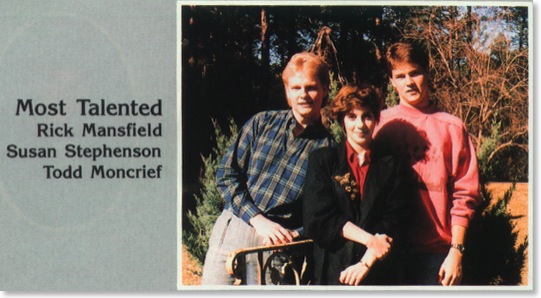
Oh, I know what you're thinking. You're thinking, "If most is a superlative, why are there three of you in the yearbook photo?" Well, the three of us were known for different talents. Todd was known for his guitar playing, Susan for her artwork, and me for my dramatic acting ability. In my senior year, I had the lead in our two plays, Cheaper by the Dozen and Lunatics at Large. I would continue after high school to participate in community theater and church drama, but I've since officially retired from acting. I did, however, enjoy going to high school and college in the 1980's. Looking back, I feel like my life then was one long 80's John Hughes Movie.
3. I have a favorite Bible verse from each testament.
Each verse has to do with my own sense of identity. I memorized both of these years ago in the NASB, which is how I will represent them here:
“Ezra had set his heart to study the law of the LORD and to practice it, and to teach His statutes and ordinances in Israel.” (Ezra 7:10)
Study, practice, teach. These are the three things that I feel called to do as well.
“I have been crucified with Christ; and it is no longer I who live, but Christ lives in me; and the life which I now live in the flesh I live by faith in the Son of God, who loved me and gave Himself up for me.” (Gal 2:20)
I don't feel as if my actions are always completely Christlike, but Gal 2:20 reminds me of both my calling and standing in Christ.
4. I have a tattoo on my right ankle.
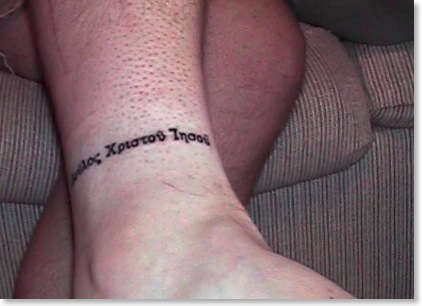
In case you can't make it out, it's the Greek phrase, "δοῦλος Χριστοῦ Ἰησοῦ" ("bondslave of Christ Jesus") from Rom 1:1. I was also going to have "ἀφωρισμένος εἰς εὐαγγέλιον θεοῦ" ("set apart/separated for the gospel of God") from the same verse added, but it hurt so much getting this done on my ankle that I had him stop with just what you see above. I've had this tattoo now for about five and a half years.
5. I have a great diversion for stress relief.
After Kathy goes to bed, I often take it upon myself to save the world through the elimination of aliens, terrorists, and other known bad guys.
I've always felt that medicines make the best gaming names. I used to have a character named "Theraflu." "Borofax" was the name for the ointment my mother used on my diaper rash when I was an infant. I added the extra x to the name because that makes it cooler. Right?
So there it is--five things about me that you may or may not have already known.
I now tag Kathy (Kathy's Kolloquy), Theron Mathis (Sword in the Fire), Bill Craig (Billog Tremors), Wayne Leman (Better Bibles Blog) and Philip Wade (Wade's Rants).
What's In Your Accordance?
Nine years ago when I was cautiously considering the switch from Windows to the Mac, one of my biggest concerns was Bible software. At the time I was primarily using BibleWorks 3.5 on my Windows machines. In BibleWorks I had access to the Greek NT, Hebrew Bible, LXX, NASB with Greek and Hebrew dictionaries, and a couple of good lexicons among a few other modules. My main concern in switching to the Mac was finding equitable replacements for all the modules I was currently using. My hopes and fears were soon relieved when I discovered Accordance for the Mac. Not only could I do everything in Accordance that I was already doing in BibleWorks, I could do much more. In many ways my discovery of Accordance helped me make the final decision to take the plunge into the Mac world. And nine years later, if I were to list out top reasons for staying with the Mac, Accordance would be high on the list.
My initial purchase of Accordance and my first modules was made through the Gramcord Institute of which at one time Accordance was associated. The texts and modules listed below were not purchased all at once but have been acquired gradually over the last nine years. Oak Tree Software, the makers of Accordance have a very generous upgrade policy with many of the updates to the modules offered for free or at very reasonable prices. When Microsoft Office for the Mac is updated every three years or so, I have to think about where I'm going to find the money for an upgrade and plan ahead. I've never had such concerns with Accordance upgrades.
Below is a list of biblical texts I own, followed by other modules I've added. I'm actually not listing everything I have because a number of public domain works were included in some of my purchases. One day I'll make the time to weed out some of these modules that I never use, but the reality is that they don't really take up that much space.
Accordance Biblical Texts I Own:
American Standard Version
Bible in Basic English
Biblia Hebraica Stuttgartensia with Westminster Morphology
Bishop's Bible
Douay-Rheims Bible
Darby Translation
English Standard Version
Geneva Bible
Novum Testamentum Graece (Nestle-Aland, 27th Edition) with Morphological tagging
Greek New Testament: Textus Receptus with Strong's Numbers
God's Word Translation
Holman Christian Standard Bible
King James Version with Strong's Numbers
La Biblia de las Américas
Rahlfs Greek Septuagint
The Message
New American Standard Bible
New American Standard Bible (1995 Update) with Strong's Numbers
New English Translation (Including all notes)
New International Version with Goodrick/Kohlenberger Numbers
New Living Translation (first edition) [this module is no longer available]
New Living Translation (second edition)
New Revised Standard Version with Apocrypha
Revised English Bible
Today's English Version
Today's New International Version
World English Bible
The Holy Bible by Noah Webster
Weymouth New Testament in Modern Speech
Young's Literal Translation
Accordance Extra-Biblical Texts I Own
Kaufmann Mishna (grammatically tagged)
The Mishna: A New Translation by Jacob Neusner
Qumran Sectarian Manuscripts (Hebrew)
Qumran Sectarian Manuscripts: A New English Translation
An Index of Qumran Manuscripts
Works of Flavius Josephus (Greek) with Morphological Tagging
Works of Flavius Josephus (English) translated by William Whiston
Works of Philo (Greek) with Morphological Tagging
Works of Philo (English) translated by C. D. Yonge
Accordance Greek Reference Works I Own
A Greek-English Lexicon of the New Testament and other Early Christian Literature, 3rd ed. (BDAG)
Strong's Greek Dictionary of the New Testament
Greek-English Lexicon of the New Testament Based on Semantic Domains (Louw & Nida)
NASB Greek Dictionary
NIV Greek Dictionary
UBS Concise Greek-English Dictionary of the NT (Barclay Newman)
New Testament Greek, 2nd ed. (Gerald Stevens)
Accordance Hebrew Reference Works I Own
Koehler & Baumgartner Hebrew and Aramaic Lexicon of the Old Testament
Brown-Driver-Briggs Hebrew and English Lexicon of the Old Testament
Strong's Hebrew Dictionary of the Old Testament
NASB Hebrew Dictionary
NIV Hebrew Dictionary
Other Accordance Reference Works I Own
Accordance Bible Atlas
Accordance Timeline
Anchor Bible Dictionary
New International Encyclopedia of Bible Words by Lawrence Richards [this may no longer be available; I could not find it at the Accordance website]
IVP Dictionary of Biblical Imagery
IVP New Dictionary of Biblical Theology
IVP Dictionary of Jesus and the Gospels
IVP Dictionary of the Later New Testament and Its Developments
IVP New Bible Dictionary
IVP Dictionary of New Testament Background
IVP Dictionary of Paul and His Letters
IVP Pocket Dictionary Series (Theological Terms, Biblical Studies, Apologetics & Philosophy of Religion, New Testament Greek)
IVP New Dictionary of Theology
NIV Compact Dictionary of the Bible
NIV Compact Nave's Topical Bible
NIV Place Names
Accordance Bible Lands PhotoGuide
Accordance Dictionary of Place Names
Assorted Quotations (Compiled by David Lang of Accordance)
Accordance Gallery of Bible Art
Dictionary of Bible Difficulties (Gleason Archer)
IVP Hard Sayings of the Bible
IVP New Bible Commentary
IVP Bible Background Commentary: Old Testament
IVP Bible Background Commentary: New Testament
Zondervan NIV Commentary
Zondervan NIV Exhaustive Concordance
NIV Study Bible
Outlines of Bible Books (David Lang and Greg Ward)
IVP New Bible Atlas
Manners and Customs in the Bible (Victor H. Matthews)
Theological Journal Library Vols. 1-5
Theological Journal Library Vol. 6
And as mentioned above, this list does not include some of the dozens of public domain works that are also installed, a number of which are quite interesting. But when I look at this list, the most amazing aspect of it all to me is that I can carry ALL of it on my MacBook wherever I go. And even more amazing, my Accordance folder only takes up about 3GB of space, even with the all the works listed above. Simply incredible!
One More Thing About the Keynote...
AppleTV, iPhone, But Nothing Macintosh: Makes You Wonder if Macworld will be Changed to Appleworld?

I, for one, have mixed feelings over the name change. As the keynote was going on yesterday, I was checking in online on some of the news sites to keep up since the streaming video wasn't released until much later. After wrapping up the iPhone presentation, I thought to myself, "Is that it? And if this is Macworld, why isn't there any reference to the MACINTOSH?!" And it looks like I'm not the only one who thought this was weird (see Paul Therrott's "About the Mac-less MacWorld [sic] Keynote" and Rob Griffith's "Expo Reaction: iDisappointed").
Don't get me wrong, I think the iPhone really is revolutionary (to use the word everyone else is describing it with). I would gladly trade my Treo for one and even jump from Sprint to Cingular (however, like a lot of folks, the high price [$499-599] is going to keep me away from the iPhone party). Nevertheless, my main interest in Apple is related to the Macintosh. As the iPod has risen in popularity, a lot of us Mac users have been a bit uncomfortable that the Mac has been a bit neglected in recent years. The recent Mac vs. PC ads have dissuaded some of this anxiety, but then yesterday Steve gives a keynote at MACWORLD and doesn't talk about MACS?!
The iPhone seems to be an amazing product. If you haven't watched the presentation of it via Quicktime, do so now. Apple is promoting it as combining the features of an iPod, mobile phone, and internet connectivity device. As for the phone features, they are saying it reinvents the phone. With 200 patents on this device, maybe so; and while I'd be glad to trade up from my Treo, this is far from being a perfect solution. The first detraction in my opinion is the small amount of memory for an iPod. This device comes in either four or eight gigabyte models because it is using flash memory. This isn't an iPod replacement--it's an iPod Nano replacement! I imagine that people will get very frustrated once they realize they have to be highly selective in choosing the music, video and pictures they carry on the device. And wait until software development begins, which is bound to happen since the device is running OS X. 4GB or 8GB is not going to be enough room to make people happy. Granted, the iPhone would have to be much thicker, but if Apple makes all these multimedia promises, then give us a 60GB drive in the thing for the love of Margaret!
Another problem with the iPhone is going to be its low 5 hour battery life for continuous use. Although I've got a Treo for which I access email, text messaging and the occasional email, I've never been inclined to play games or watch video because it runs down the battery. On normal use my Treo is good for a couple of days between recharges. But the iPhone is meant to be a media device in addition to being a mobile phone. Further, it's not going to be as with some devices that you can simply carry an extra battery--you won't be able to swap out batteries on the iPhone just like you can't on an iPod. Heavy users better be ready to simply carry a power supply with them.
And while that new "multi-touch" screen looks pretty nifty, it will drive those who abhor fingerprints downright crazy. The advantage of a stylus or mini-keyboard on most smart phones is that fingerprints are minimized.
Finally, the cost is going to be a major problem. This shouldn't be surprising because throughout Apple's history, they have not just made superior products, they have charged premium prices for them as well. While I'd love an iPhone, I already know it's out of my price range. The initial market for the phone is obviously aimed folks like me who use smart phones already. But that market is only so big. For this to really be successful, Apple has to aim for the iPod crowd, which is in the tens of millions. But how many will pay $599 for a phone when they can get a lesser-featured phone for free when they sign up for a new plan? I have no idea how much it costs to make the iPhone, but if they really want to take the world by storm with them, a $299 price would be much more reasonable. Maybe by the second or third generation, the iPhone will come down in cost and I will consider getting one.
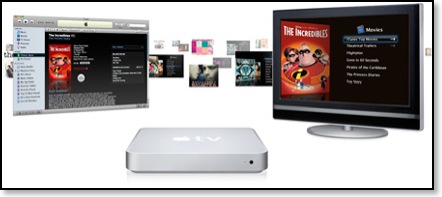
Back to the keynote... As a Mac user, I always look forward to the keynotes. There were a number of things related to the Mac that I was looking forward to hearing about that simply weren't addressed. This was surprising because had it not been for the AppleTV and the iPhone, they certainly would have been the main features of the keynote.
For instance...
Where was the demonstration of a mature, soon-to-be-shipped, Mac OS X.5 (Leopard)? Back during the summer Jobs told us that he was not revealing everything about Leopard yet because he didn't want Microsoft to copy everything in Vista. Well, Vista is out, so a lot of us were expecting a full demo of the new OS X.
Where was a preview of new features in iLife '07? Besides iMovie, iDVD, GarageBand (the last of which I have no use for), I was especially looking forward to seeing a newly retooled iWeb. I've said that if it addresses my complaints of the v. 1 shortcomings, I may very well convert this site over to iWeb.
Where was a preview of new features in iWork '07? iWork was slighted as it was in last year's keynote, in spite of the fact that it's a rapidly improving productivity suite from Apple. With last year's release, I completely abandoned any use of PowerPoint in the classroom in favor of iWork's Keynote which offers much more of a professional look in my opinion. Although I don't use Pages a whole lot, I've been using it more over the past year. Plus, the rumor is that a spreadsheet app will be added to the mix this year making iWork an actual competitor to Microsoft Office.
Speaking of which, where were demonstrations from third party Mac software developers such as Microsoft and Adobe? I would have guessed that someone from Adobe would have taken the stage to demo the next version of Photoshop which will feature a universal binary for much faster performance on Intel Macs. Also, I would have expected Roz Ho, general manager for Microsoft's Macintosh Business Unit to take the stage to promote the upcoming Mac Office 12, now re-christened Mac Office 2008 (even though it will be released in 2007).
I don't use all the apps in Office as much as I used to, but I do still use them, and would have liked to have seen such a demonstration which has been fairly standard in the past at these events. Instead, Microsoft was left to simply releasing its own press release and its own interview with Roz Ho. The main selling points of the new version of Office seem to be it's Open XML file format as well as new interface. Interestingly, from the pictures I've seen the new interface seems to borrow less from Office 2007 for Windows and more from Apple's own iWork suite.
Also, I might've expected someone from Intel to talk about upcoming processors, leading Steve to talk about the Mac's future road to technology. But nothing...nothing about Macs was said at all. It was all AppleTV and iPhone (and 3/4 were simply about the iPhone).
Maybe my misgivings about everything non-Macintosh from Apple is counter-productive. Certainly the success of the iPod has kept Apple a strong company and this feeds into Apple's ability to produce high-quality computers such as the MacBook I'm typing this on. And I suppose that Apple has to think about the future and diversity means greater security.
But wasn't there also a time when Apple produced computers, printers, cameras, scanners, a PDA (the Newton), and Jobs axed all the peripheral to get back to the roots of the company--the actual Macintosh computer. Am I the only one who remembers this? Maybe the difference is that products like the Apple Quicktake Camera weren't near as successful as the iPod and therefore put a drain on Apple's business. But I wonder if in five years or so we won't see another wave of product streamlining. I just hope that when it comes to it, it won't be the Mac that's lost in the shuffle.
Interpreting This Lamp

So this past Saturday, I received another email from Bob in which he offered his own meditation and interpretation on the graphic. I was so moved, I asked him if I could repeat it here for my readers. Here is what Bob wrote:
It is early (5: 57 a.m.) and I just made some coffee. If you dont mind, I am going to pass along a few thoughts that the lamp image brings to mind.
Nowadays, libraries tend to be open spaces with big windows, big tables, and lots of computers. They are as much a place to congregate and access databases as anything. This has not always been the case.
Gone, particularly in library facilities built in the last thirty years, are the nooks and crannies, winding halls and archways, and solid oak furniture. Gone are the spaces you can retreat from the world and absorbmuch more than mere readthe thought of another writer. Gone is the tunnel where your mind connects with another mind through some kind of portal.
The image you found at Microsoft hints at the lost portal. First, the image presents the best wallpaper there is for the portalthe spines of books. The winding hall and archway of the image lets you know you walked through a portal to a nook and cranny. And the lamp in the image casts a protective wall around your space. Here the warmth and glow of the lamp lights the tunnel your mind travels to meet another mind in a booka Box Of Organized Knowledge. You open the door and take the important step as you open the book and turn the page. The only sound you hear is the crinkle of the page.
All this requires the wallpaper, the winding hall and archway, the nook and cranny, and the small lamp. Rick, the image you found tells me that and much more. Have a good journey the next time you find yourself at this portal.
Bob Patrick
Frankfort, KY
Thanks, Bob!
Literal Is Not More Accurate If It's Unintelligible
One of the points that I had disagreed with Kevin on had to do with the claim often made by proponents of the ESV this their translation of choice is literal like the NASB but more readable. In my examination, I find this to be a highly exaggerated claim. My feeling toward the ESV is that it is weakened by its reliance on antiquated phrasings in the RSV (upon which it was based) and there's really no excuse that these have never been corrected. I often point to two representative verses as proof of my disbelief that the ESV is more readable than the NASB. One is Matt 7:1:
“Judge not, that you be not judged.” (ESV)
“Do not judge so that you will not be judged.” (NASB)
Try reading the ESV rending of Matt 7:1 out loud. The ESV employs an awkward use of a reverse negative ("Judge not"). The problem is that no one I know of speaks this way on a regular basis unless you want to count Yoda in the Star Wars movies (and he lived a long time ago in a galaxy far, far away). Even with the reputation that the NASB has for literalness and even woodenness, its translators had the sense to remove a great many of its uses of reverse negatives in its 1995 update (although some remain). Granted, you can find reverse negatives in just about any translation, but I would suggest that the ESV has more than any modern translation of the last 15 years or so because they were never removed when updating the RSV. This makes it less readable in these verses than the NASB and just about any other translation.
Another example I point to regarding the ESV's exaggerated claim of readability is a verse like Heb 13:2:
“Do not neglect to show hospitality to strangers, for thereby some have entertained angels unawares.” (ESV)
“Do not neglect to show hospitality to strangers, for by this some have entertained angels without knowing it.” (NASB)
Just because a word is in the dictionary does not make it standard English. The ESV's retention of the RSV's archaic and antiquated unawares is downright odd. I can't imagine anyone outside of perhaps a hillbilly community still using unawares today. These are merely two examples, but they represent a great many more. Yes, there are some places in which the ESV is more readable than the NASB, but the ESV is incredibly uneven because of its dependence on antiquated words and sentence structures in the RSV. My goal is not to knock the ESV so much as to challenge the outrageous claims of some of its proponents.
In response to the above two verses I suggested, Kevin said that the TNIV had flaws as well and gave Rom 1:3 as an example:
In Rom. 1:3, it changed it to "regarding his Son, who as to his earthly life was a descendant of David." In the ESV ... it uses "flesh." I think Paul wanted to use "flesh" to express the idea of "body." The TNIV might be a bit too loose in using "earthly life." It's only a possible intended meaning but not necessarily what Paul actually wanted to express in using "flesh."
While I do acknowledge that all translations have weaknesses, I personally don't see a problem with Rom 1:3 in the TNIV. The rendering "according to the flesh" [κατὰ σάρκα] in the ESV (and a number of other formal equivalent translations) while certainly reflecting a literal rendering, really doesn't communicate that much. Although there's part of me that likes a translation that renders σάρξ as "flesh" because it triggers in my mind the underlying Greek word, I know for a fact that for the average church-goer and for every non-church-goer, "according to the flesh" is a meaningless phrase. Most of my readers here know what "according to the flesh" means because they have the background for understanding it. But try to step outside your learning and think about the phrase from the ESV: "concerning his Son, who was descended from David according to the flesh." That is just unintelligible to those who don't have a knowledge as to what the phrase means because it reflects an idiom that is not in current English usage (especially outside the church). At best, use of "flesh" in this sense is insider church language, and I would still suggest that many sitting in an average Sunday School class couldn't give you an accurate explanation.
Obviously all Paul is saying is that Jesus was a descendent [υἱοῦ αὐτοῦ τοῦ γενομένου ἐκ σπέρματος] of David only in regard to his earthly body. He's being very careful not to imply that David actually came before Christ because in reality, Christ is eternal. Therefore, the TNIV's rendering "who as to his earthly life was a descendant of David" fully communicates Paul's intention. Yes, the ESV is more literal in the strictest sense, but in way similar to the point I was trying to prove in "Grinding Another Man's Grain," if literal is unintelligble, it is certainly not accurate.
Also note that the TNIV indeed has a footnote to this verse that says "Or who according to the flesh" which I feel is an INCREDIBLY responsible way to handle the verse. It gives a very readable rendering in the text and a literal rendering in the footnote. The best of both worlds, wouldn't you say?
Now on a related note, I've been mildly reflecting on Mark Driscoll's announcement that Mars Hill Church (Seattle, Washington) would replace the NIV with the ESV as their primary translation. Now on the face of things, that's perfectly fine with me. Every church should use the translation that best works in their context. They have a right and obligation to sort through such choices. My problem lies not with the choice, but with Driscoll's rhetoric as he elevates the ESV over translations he considers inferior.
As one of his reasons for choosing a new translation, Driscoll states "The ESV upholds the truth that Scripture is the very words of God, not just the thoughts of God." The context of the statement comes from two paragraphs earlier in which he writes, "we should transition from the NIV (more of a “thought-for-thought” translation) to the English Standard Version (ESV, more of a “word-for-word” translation) as our primary pulpit translation." In my opinion the statement made by Driscoll which I have highlighted in bold above betrays a lack of understanding of the differences between formal and dynamic equivalent translation methods.
However, this is case in point again to the fact that the ESV cannot stand up to the claims made by its proponents. Take for example Rom 1:3 discussed above. The ESV does not translate that verse literally throughout. In fact, it doesn't translate a significant Greek word found in the original text at all.
Rom 1:3, [περὶ τοῦ υἱοῦ αὐτοῦ τοῦ γενομένου ἐκ σπέρματος Δαυὶδ κατὰ σάρκα] in English literally reads "concerning his son who was born [γενομένου] from the seed [σπέρματος] of David according to the flesh."
Therefore, the ESV isn't entirely literal in this verse either. The ESV's rendering of "concerning his Son, who was descended from David" completely omits either γενομένου or σπέρματος. I would have suggested they are leaving out the former, but according to the ESV Reverse Interlinear, it's the latter. Regardless, if, as Driscoll says, the "ESV upholds the truth that Scripture is the very words of God, not just the thoughts of God," why then does the ESV offer a "thought-for-thought" (dynamic equivalent) translation for "γενομένου ἐκ σπέρματος Δαυὶδ" in Rom 1:3? Is the ESV shortchanging the word(s) of God? Is not every single word important? Is σπέρματος not inspired? According to Driscoll's own standards for why he chooses the ESV, the ESV itself cannot stand up. (Also compare with the NASB rendering of Rom 1:3 in which both Greek words are translated.)
Now, if you've read this blog for any amount of time at all, you'd know that I would have no problem with the ESV's rending of "concerning his Son, who was descended from David" any more than the TNIV's "who as to his earthly life was a descendant of David." Translation is more complex than simply looking up the definition of a Greek word and supplying an equivalent English word. Suggestion of such by Driscoll and others demonstrate a significant naiveté on the subject of translation method.
My contention is not with the ESV. But I do have great problems with the inaccurate rhetoric that I often hear from proponents and endorsers of this translation. I have favorite translations, and I have written about a number of them on this blog. While I talk of their qualities that I like and appropriate uses for them, I go out of my way to try to do so without needlessly putting down other versions of the Bible. I've probably been harder on the ESV on this blog than on any translation, but usually it's been in a context of addressing the audacious and often fallacious claims made for it by ESV supporters. This idea that literalness equals greater accuracy or literalness equals greater faithfulness to the original text is pure nonsense if the rendering is so literal that the author's intent and meaning is unintelligible to readers and hearers. Antiquated vocabulary and sentence structure do not give a translation greater authority--it merely limits readership in an contemporary setting.
The New Testament was written in Koiné Greek--the common trade language of the day--a language accessible by the masses. If a Bible version uses renderings that are not understandable to the masses, renderings that sound like they were written in any previous generation or written in some highly exalted form--regardless of how literally accurate--then that translation is not in keeping with the spirit or the manner in which the New Testament was written.
A Pre-Movie Conversation
Kathy: I want to see that. I was on the swim team in junior high.
Rick: I didn't know that.
Kathy: Yes, I even won an 11th place ribbon.
Rick: 11th place?
Kathy: There were twelve lanes.
Rick: I didn't know they made 11th place ribbons.
Kathy: It's kind of off-purple.
Tyndale House Checks In

First of all, Tyndale offers a nifty booklet, Text and Product Preview of the New Living Translation that provides an overview of the translation philosophy behind the NLT and sample text. You can get this mailed to you for free simply by requesting one from Laura Bartlett. Email her at LauraBartlett@tyndale.com. The Text and Product Preview is more in depth than anything at the Tyndale House NLT website. Here's a list of subjects from the Table of Contents:
- What People Are Saying About the New Living Translation
- Bible Translation Team
- Questions and Answers
- New Living Translation compared with the King James Version
- New Living Translation compared with the New King James Version
- New Living Translation compared with the New International Version
Following the above topics comes 30 pages of texts from the Old and New Testaments. What's really interesting about these sample passages are the "Distinctive Features of the NLT" section at the end of each text. This is a commentary of sorts that explains translational decisions in the NLT often in comparison with more traditional translations. For my interests, this is one of the most intriguing parts of the booklet. It allows the reader to step inside the mind of the translation committee in the context of the scriptural passages.
Regarding my original review of the NLT, Laura Bartlett corrected my reference to the second edition of the NLT (2004) as the "NLT2." The correct abbreviation, I was told, is NLTse. Actually, I know that, but when comparing the first and second editions of the translation, it seems to make sense to use NLT1 and NLT2. Otherwise, what do you call the first (1996) edition? To simply use NLT would be misleading since it can refer to either version.
I asked her about the mysterious "New Translation" released by Tyndale in 1990, six years before the NLT. I had always been under the assumption that the New Translation was an early version of the NLT. No so. Bartlett explained:
Although Ken Taylor was the primary translator, the New Translation does not have much to do with either the Living Bible or the New Living Translation. It was a project of Dr. Taylor's which he was working on with scholars simultaneous with but independent of the work that the 90 scholars on the NLT translation committee were doing on the NLT. Dr. Taylor's passion was understandable, usable, trustworthy rendering of Scripture, so he worked on translation projects for most of his life, this being one of them. This was really a new work, not based on the Living Bible. It was a scholarly translation of the epistles on which he had a lot of input from other scholars. As the NLT was in progress already as a full Bible, I believe that not many copies of the New Translation were ever distributed.
I still believe the NLT Notemaker's Bible is the best layout I've ever seen for a wide-margin Bible of any translation, but unfortunately it was NLT1 and therefore out of print. I asked if there was a wide-margin edition in the works for the NLT2 but was told that there's no plan for one currently. That's a shame. I firmly believe that if Bible publishers want people to really study, teach and preach from a translation, there needs to be editions available for those who wish to include their own notes.
Short of a wide-margin edition, I asked which of the many NLTse Bibles out there would be suitable for preaching. Laura Bartlett suggested two. First, the Personal Size Large Print. Of this edition she says that "It's a nice size for carrying and the large print makes it easier to read if it's sitting on a pulpit." Another suggestion is the Large Print Slimline Reference Bible. "It's available in LeatherLike in addition to the bonded leather--I think LeatherLike has a better feel than bonded--more like genuine leather. But the font is a little bit smaller than the Personal Size LP. 'Large Print' isn't printed on the cover, just the box it comes in, which is also nice."
One final note. I mentioned in my earlier review of the New Living Translation that it is the Bible of choice for my wife Kathy. Her primary Bible for study and carrying to church is an NLT1 Life Application Bible. She has not yet warmed to the NLTse. So when I got the package from Laura Bartlett, I could feel that there was a Bible inside. I naturally assumed that it was for me--perks of blogging and all! However, it turned out to be a burgundy leather copy of the Life Application Bible in the NLTse not for me but as described in the accompanying note "an 'update' for Kathy." That was an extremely thoughtful gift for her and attentive to the remarks in my review. Thanks, Laura.
More on Mark 1:41 in the TNIV (and NEB/REB)
In his original post, Jeremy deftly notes
The scholarly consensus is that the original text reads that Jesus was angry here. Out of the six commentaries I read (and three more whose conclusions I know), only one takes the view that Mark here says Jesus was compassionate rather than angry, and he simply ignores the issue and assumes the translations to be right. All the others discuss the issue, give the arguments, and conclude that Jesus was angry. Scholarly consensus doesn't mean the view is correct. I don't subscribe to the head-counting method of biblical scholarship. Still, differing from the majority consensus requires a strong argument that they're wrong or some good reason to presume another view.
After reading this, I looked at my own commentaries on Mark. Now, I'll make a confession here that of the four gospels, commentaries on Mark are the most lacking in my collection with only about a half dozen representatives. But I had two serious contributions in which I looked up Mark 1:41 Both Robert Guelich (Word Biblical Commentary) and David Garland (NIV Application Commentary--I know the NIVAC is not an overly critical commentary, but Garland is a top-notch scholar and the Mark volume is perhaps the best in the series) consider that the better (original) reading should be angry/ὀργισθείς.
'Nuff said. I'm convinced.
Bible translations tend to be keepers of tradition and very slow to change even if a different rendering would reflect a more accurate representation of an original reading supported by current scholarship. This is further reason why I am using translations in the Tyndale tradition less. So having said that, cheers to the NEB/REB! In my previous post, I mentioned the REB as the only other major translation to go with the ὀργισθείς reading, but I should have known that I spoke too soon. See, this goes back to that habit of relying on electronic texts. There just is no NEB module in Accordance! So I got out my copy of the NEB and I was delighted (but not surprised) to read this rendering of Mark 1:41...
In warm indignation Jesus stretched out his hand, touch him, and said, 'Indeed I will: be clean again.'
A textual note in the NEB reads "Some witnesses read Jesus was sorry for him and stretched out his hand" obviously referring to the σπλαγχνισθείς variant. The REB follows in the same tradition with its less dynamic "moved to anger." This is further evidence to my claim of the significance of the NEB in the history of English translations. The NEB consistently nails correct renderings decades before other translations follow suit. And in this case, the TNIV is the only contemporary translation to deny the accepted Greek eclectic text with its use of "indignant" (although the NET, NRSV and NLT refer to the alternative reading in their textual notes) thus demonstrating its accuracy once again.
Although I would still like to see confirmation of this thinking from the TNIV Translation Committee, the question posed in my previous entry seems to have been answered.
Compassionate? Angry? Indignant? A "Gut Feeling" from Mark 1:41 in the TNIV
Kletos writes:
I was going to give the TNIV a chance, so I began to read in Mark. I got as far as verse 41 of chapter 1 where I read, "Jesus was indignant. He reached out his hand and touched the man. "I am willing," he said. "Be clean!" So, I consulted my Greek New Testament (published 1994). The authors categorized this textual variant as a {B} meaning that the variant included in the text ("Jesus was moved with compassion..." - which is how nearly every other translation renders the verse) is "almost certain." The texts that support "indignant" were few and didn't seem to be more ancient than those that support the dominant translation.
Now, lest I cause some readers' eyes to glaze over and move on to some other web page in the blogosphere, let me nutshell the issue before going into a bit more detail. Here's the question: How would Jesus respond to a leper who begs to be healed--with compassion or anger? Most would instantly suggest compassion, but the answer may not be so easy. Consider how three different translations of the Bible have rendered this verse:
| NIV | REB | TNIV |
|---|---|---|
Mark 1:40 ¶ A man with leprosy came to him and begged him on his knees, “If you are willing, you can make me clean.” |
Mark 1:40 ¶ On one occasion he was approached by a leper, who knelt before him and begged for help. ‘If only you will,’ said the man, ‘you can make me clean.’ 41 Jesus was moved to anger; he stretched out his hand, touched him, and said, ‘I will; be clean.’ | Mark 1:40 A man with leprosya came to him and begged him on his knees, “If you are willing, you can make me clean.” 41 ¶ Jesus was indignant. He reached out his hand and touched the man. “I am willing,” he said. “Be clean!" |
In reality, there are some ancient texts that imply Jesus had compassion [σπλαγχνισθείς] and some that say he was angry [ὀργισθείς] at some level. If you've stopped to look this up in a translation other than the three listed above, odds are very high that yours says that Jesus had compassion for the man. In fact, until the TNIV, the REB was the only major translation I knew of that went with the other variant.
Kletos mentioned in his blog entry that "compassion/σπλαγχνισθείς" was {B} reading in the UBS Greek New Testament meaning that the editors believed "that the text is almost certain." I was at home when I first read Kletos' blog entry, and all I had on my shelves at home (I keep newer materials in my office at school) were the older 3rd ed. UBS Greek text and the first edition of Bruce Metzger's Textual Commentary. Both of these older works show σπλαγχνισθείς as a {D} reading suggesting "that the Committee had great difficulty in arriving at a decision." Further regarding {D} readings, Metzger writes "among the {D} decisions sometimes none of the variant readings commended itself as original, and therefore the only recourse was to print the least unsatisfactory reading."

Now, when I read Kletos' blog entry, I have to admit that while I was curious, this didn't bother me as much as it did him. I find these issues quite interesting, and to me a good understanding of the underlying issues goes a long way. Obviously, this is not the first time that a translation committee has gone with a variant reading, and all the more reason to read Bible versions in parallel. So, while I'm not losing sleep over this issue, the further I've looked at the above mentioned underlying issues, the less clear they become.
However, Kletos was certainly right to be startled. Upon looking at the 4th ed. UBS Greek New Testament and the 2nd ed. Textual Commentary, the reading had moved from a {D} to a {B} variant between editions!
Why? Beats me. There's no explanation for the upgrade.
And Metzger's commentary on the reading is word-for-word-identical in BOTH editions:
It is difficult to come to a firm decision concerning the original text. On the one hand, it is easy to see why ὀργισθείς ("being angry") would have prompted over-scrupulous copyists to alter it to σπλαγχνισθείς ("being filled with compassion"), but not easy to account for the opposite change. On the other hand, a majority of the Committee was impressed by the following considerations. (1) The character of the external evidence in support of ὀργισθείς is less impressive than the diversity and character of evidence that supports σπλαγχνισθείς. (2) At least two other passages in Mark, which represent Jesus as angry (3.5) or indignant (10.14), have not prompted over-scrupulous copyists to make corrections. (3) It is possible that the reading ὀργισθείς either (a) was suggested by ἐμβριμησάμενος of v. 43, or (b) arose from confusion between similar words in Aramaic (compare Syriac ethraham, "he had pity," with ethra'em, "he was enraged"). [pp. 76-77, 1st ed.; p. 65, 2nd ed.]
Is there any explanation between the editions as to why the reading went from a {D} to a {B}? Nope, not at all. And if it's so difficult to come to a firm decisions regarding these readings, why the change?
I should also point out that although the NET Bible opts for the traditional reading of σπλαγχνισθείς as evidenced by the rendering of "compassion," it takes the alternate variant serious in the accompanying textual note:
The reading found in almost the entire NT ms tradition is σπλαγχνισθείς [splanchnistheis, “moved with compassion”]. Codex Bezae (D), {1358}, and a few Latin mss (a ff2 r1*) here read ὀργισθείς [orgistheis, “moved with anger"]. It is more difficult to account for a change from “moved with compassion” to “moved with anger” than it is for a copyist to soften “moved with anger” to “moved with compassion,” making the decision quite difficult. B. M. Metzger (TCGNT 65) suggests that “moved with anger” could have been prompted by 1:43, “Jesus sent the man away with a very strong warning.” It also could have been prompted by the man’s seeming doubt about Jesus’ desire to heal him (v. 40). As well, it is difficult to explain why scribes would be prone to soften the text here but not in Mark 3:5 or 10:14 (where Jesus is also said to be angry or indignant). Thus, in light of diverse mss supporting “moved with compassion,” and at least a plausible explanation for ὀργισθείς as arising from the other reading, it is perhaps best to adopt σπλαγχνισθείς as the original reading. Nevertheless, a decision in this case is not easy. For the best arguments for ὀργισθείς, however, see M. A. Proctor, “The ‘Western’ Text of Mark 1:41: A Case for the Angry Jesus” (Ph.D. diss., Baylor University, 1999).
What most catches my attention in the above explanation is the reference to Proctor's analysis of the issue. Had someone on the TNIV Committee been convinced by the arguments in Proctor's work? I haven't seen the dissertation, but it's a recent work and the TNIV is certainly a recent translation.
Nevertheless, seeking to get answers straight from the source, I asked about the TNIV rendering of Mark 1:41 on the contact form at the TNIV web site. On Dec. 14, I received this reply:
Dear Mr. Mansfield,
Thank you for contacting International Bible Society regarding the TNIV’s rendering of Mark 1:41, changing “filled with compassion” to “was indignant.” You have clearly done some fine research already and discerned the difficulty posed by splangchnistheis. The verb basically means “to have the viscera moved”, viscera considered to be the seat of emotion. In the Hebrew/Jewish culture, this would refer to the bowels and intestines, and the seat of the more tender affections, such as compassion, while the Greek poets thought of the bowels as the seat of the more violent passions, such as anger (according to Thayer’s Greek- English Lexicon). So which way should we go here?
This verb is actually the strongest of three words which might be translated as being compassionate, the others being sumpaschein and eleein. This one implies not only a pained feeling at the sight of suffering but in addition a strong desire to relieve or to remove the suffering. Hence the TNIV translators felt that compassion alone did not exhaust the meaning load of the term. They needed a slightly stronger English term to convey that the feeling was more than compassion, and so they settled on “indignant.” This conclusion is consonant with the fact that the feeling in Jesus’ heart at once turned to action.
Thank you for your kind words regarding the TNIV.
Sincerely, Eugene Rubingh, Translation Consultant, International Bible Society
If I was reading Dr. Rubingh's explanation correctly, it would seem that the TNIV translators (of whom Rubingh is not one of as far as I know) did not go with the variant meaning "to be angry" but had merely used a word in English, indignant, that captured the sense of σπλαγχνισθείς better than merely "moved with compassion." And as I thought more about the issue, I had to admit that the word indignant is not a mere synonym for anger. To be indignant implies "feeling or showing anger or annoyance at what is perceived as unfair treatment." It's anger for a cause. One can be indignant about the injustices that come with life. Wouldn't Jesus look at this leper in Mark 1:40 and feel some kind of anger toward the disease that had made this man an outcast to society? Jesus wasn't feeling merely compassionate, although that was part of it. And it wasn't simply anger as rendered in the REB (granted, from an alternate reading). Rather, Jesus was indignant about the situation, so he healed the man.
Okay, I could start to get my mind around this. Understanding of the underlying issues trumped confusion once again, right?
Well, not so fast.
I emailed Dr. Rubingh back and asked permission to quote the above information which he graciously gave me in an email reply. As I was about to post my entry about the TNIV's rendering of Mark 1:41 on this blog (three weeks ago, mind you), I happened to look at the text in my copy of the TNIV Bible, and I noticed something that I hadn't seen before.
You see, I have this bad habit. Often when I look up scripture passages, I do so on the computer using Accordance. That is not the bad habit. My mistake often comes from not turning on the textual notes with the text itself. I had completely missed the TNIV textual note that read "Many manuscripts Jesus was filled with compassion."
This could only mean that the TNIV Translation Committee did not base the rendering of "Jesus was indignant" from σπλαγχνισθείς. That was the reading that the textual note refers to! Obviously, the Committee was convinced with the ὀργισθείς variant, although they wisely didn't simply render the word "angry" like the REB. At the very least, it reads better.
By this point I feared I was on the verge of pestering Dr. Rubingh, but I emailed him a third time in regard to the TNIV textual note which neither of us had referenced in our original correspondence. I haven't heard from him yet, but the holidays may have slowed his reply.
Nevertheless, I still don't have a definitive answer for the TNIV's rendering of this passage. Mark 1:41 is not covered in the "Passages Commonly Asked About" section on the TNIV web site. And in a brief Google survey, I found a number of references to the TNIV's preference in Mark 1:41, but no definitive answer for the decision. I do find the issue curious and extremely interesting. If anyone has any insight or inside info from the Translation Committee, please share it with us.
See also Jeremy Pierce's treatment of the subject: "Mark Tidbit 2: Jesus' Anger"
And see my follow-up to this post: "More on Mark 1:41 in the TNIV"
First They Won't Let Us Browse the Stacks; Then They'll Turn Us Into Batteries and Throw Us Into the Matrix

The new library at Chicago State University has one ironclad rule: No students allowed in these stacks – only robots. Every book, CD, and DVD in the school’s $38 million facility is tagged with a radio-frequency ID chip. When a borrowed item slides through the return slot, the system identifies and sorts it. Human librarians shelve post-1990 materials in the traditional stacks and drop older stuff into file-drawer-sized bins. From there, it’s all robots – tall, forklift-style machines that run on tracks and stow the materials in a three-story-high storage facility. No Dewey decimals? No problem. The computer knows where everything is and can hustle the correct bin to the circulation desk for checkout.
And if the software crashes? “Libraries are highly networked,” says dean Lawrence McCrank. CSU’s database is backed up at the Online Computer Library Center in Dublin, Ohio, and the University of Illinois at Urbana-Champaign. “We were building databases with integrated retrieval before there were computers,” McCrank says. “They were called card catalogs.”
Robotic Librarians by the Numbers
- Top speed of CSU’s robotic librarians: 7 mph
- Average time for a robot to retrieve five books: 2.5 minutes
- Average time for a student to retrieve five books: 2 hours
- Capacity of CSU’s high-density storage: 800,000 volumes
- Robots making out in the stacks: 0
– Erin Biba
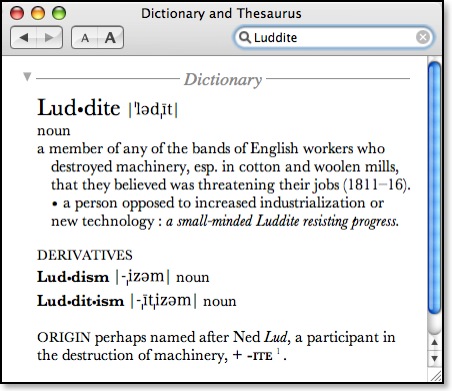
This is also why I favor the Dewey Decimal system which is a giant index of subject matter if you understand how it works. But even Library of Congress stacks have similar books together. But such random chance and serendipitous discoveries would be a thing of the past at robotic-only collections. Call me a Luddite if you will, but I just don't like it.
This is surely the first wave of the robotic revolt--taking away our ability to completely access knowledge and make chance discoveries. When you wake up one day and find that something just doesn't feel right about the virtual world you live in, be sure to take the red pill.
Environment Watch: Ancient Ice Shelf Breaks Off in Arctic
Be sure to view the ABC News Video for ramifications. The Reuters article is reproduced below:
Huge ice shelf breaks free in Canada's far north
By Jeffrey Jones
Reuters
CALGARY, Alberta - A chunk of ice bigger than the area of Manhattan broke from an ice shelf in Canada's far north and could wreak havoc if it starts to float westward toward oil-drilling regions and shipping lanes next summer, a researcher said on Friday.
Global warming could be one cause of the break of the Ayles Ice Shelf at Ellesmere Island, which occurred in the summer of 2005 but was only detected recently by satellite photos, said Luke Copland, assistant professor at the University of Ottawa's geography department.
It was the largest such break in nearly three decades, casting an ice floe with an area of 66 square km (25 square miles) adrift in the Arctic Ocean, said Copland, who specializes in the study of glaciers and ice masses. Manhattan has an area of 61 square km (24 square miles).
The mass is now 50 square km (19 square miles) in size.
"The Arctic is all frozen up for the winter and it's stuck in the sea ice about 50 km (30 miles) off the coast," he said.
"The risk is that next summer, as that sea ice melts, this large ice island can then move itself around off the coast and one potential path for it is to make its way westward toward the Beaufort Sea, and the Beaufort Sea is where there is lots of oil and gas exploration, oil rigs and shipping."
The break went undetected when it happened due primarily to the remoteness of the northern coast of Ellesmere island, which is only about 800 km (500 miles) from the North Pole.
The speed of the crack and drift-off shocked scientists.
Satellite images showed the 15-km long (9-mile long) crack, then the ice floating about 1 km (0.6 miles) from the coast within about an hour, Copland said.
"You could stand at one edge and not see the other side, and for something that large to move that quickly is quite amazing," he said.
Copland said the break was likely due to a combination of low accumulations of sea ice around the mass's edges as high winds blew it away, as well as one of the Arctic's warmest temperatures on record. The region was 3 degrees Celsius (5.4 degrees F) above average in the summer of 2005, he said.
Ice shelves in Canada's far north have decreased in size by as much as 90 percent since 1906, and global warming likely played a role in the Ayles break, Copland said.
"It's hard to tie one event to climate change, but when you look at the longer-term trend, the bigger picture, we've lost a lot of ice shelves on northern Ellesmere in the past century and this is that continuing," he said. "And this is the biggest one in the last 25 years."
Copyright 2007 Reuters News Service. All rights reserved. This material may not be published, broadcast, rewritten, or redistributed.
Hoppin' John for New Year's

Now when I said that I looked for a definitive recipe I meant just that. The recipe we use and that I will repeat below is from the McIlheny family (creators of Tabasco) and dated to 1868. Although it calls for a 1/2 pound of bacon or sliced salt pork, this year we substituted some leftover ham from Christmas day, and I have to admit it was quite tasty. Also, the addition of green onions is ours--it just looked like it needed some color! You should also know that this is not a spicy dish even though it calls for a teaspoon of Tabasco. I usually add some more Tabasco and salt to my bowl or a little bit of cajun seasoning. A pat of butter goes a long way, too.
I know that it's too late for you to use this recipe for New Year's Day 2007, but it's good year round so be sure to make your self a copy.
HOPPING JOHN DRIED PEAS
(1868 Original Recipe)
1 pound of black-eyed peas
3 pints of cold water
1/2 pound of sliced salt pork or bacon
1 teaspoon of Tabasco Sauce
1/2 teaspoon of salt
2 tablespoons of bacon fat or lard
2 medium onions, chopped
1 cup of uncooked long grain rice
1 1/2 cups of boiling water
Cover peas with 3 pints of cold water in a large kettle. Soak overnight.* Add the salt pork, Tabasco Sauce and salt. Cover and cook over low heat for about 30 minutes. Meanwhile cook the onions in the bacon fat until they turn yellow and add to the peas with the rice and boiling water. Cook until the rice is tender and the water is absorbed, about 20-25 minutes, stirring occasionally. Yield: about 8 cups. Serves 7 to 8.
*Modern method of dried peas rather than soaking overnight is to bring them to a boil, simmer for 2 minutes and let stand for 1 hour.
(This was a popular dish during days of scarcity.)
McIlheny Company, Manufacturers of Tabasco Brand Products
Recipe source: Jude W. Theriot, La Meilleure De la Louisiane. Gretna, Louisiana: Pelican Publishing, 1980.











